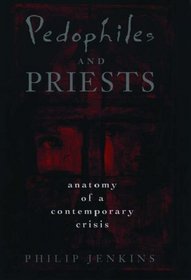Search -
Pedophiles and Priests: Anatomy of a Contemporary Crisis
Pedophiles and Priests Anatomy of a Contemporary Crisis
Author:
If we can believe the six o'clock news, there has been an epidemic of sexual abuse among the clergy, and especially among the Roman Catholic clergy. We have certainly seen many well-publicized cases, with front-page photos of priests led off to jail, and television interviews of parents afraid to let their children associate with clergy. But did... more »
Author:
If we can believe the six o'clock news, there has been an epidemic of sexual abuse among the clergy, and especially among the Roman Catholic clergy. We have certainly seen many well-publicized cases, with front-page photos of priests led off to jail, and television interviews of parents afraid to let their children associate with clergy. But did... more »
ISBN-13: 9780195095654
ISBN-10: 0195095650
Publication Date: 1/25/1996
Pages: 214
Rating: 1
ISBN-10: 0195095650
Publication Date: 1/25/1996
Pages: 214
Rating: 1
1 stars, based on 1 rating
Publisher: Oxford University Press
Book Type: Hardcover
Other Versions: Paperback
Reviews: Amazon | Write a Review
Book Type: Hardcover
Other Versions: Paperback
Reviews: Amazon | Write a Review
Genres:
- Health, Fitness & Dieting >> Mental Health >> Abuse & Self Defense >> Sexual Abuse
- Nonfiction >> Social Sciences >> Children's Studies
- Christian Books & Bibles >> Churches & Church Leadership >> General





